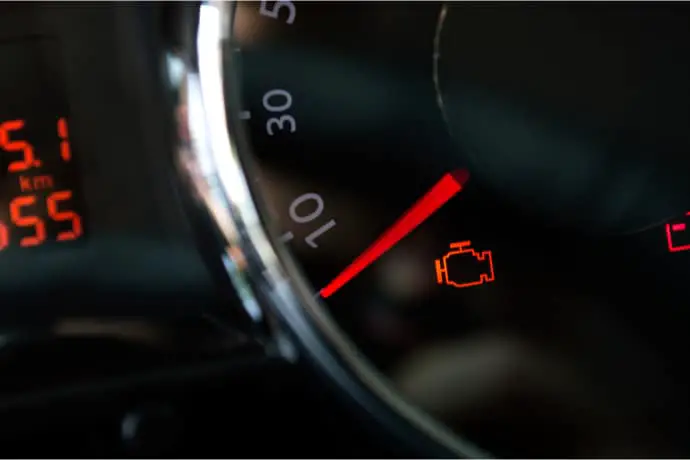Last Updated on August 26, 2022 by

These days, modern cars are equipped with very capable computers and software. The benefit of this is that many functions are automated and many extra features, such as cruise control, can be offered as standard on vehicles. This is great for the customer and has changed the auto mechanics business forever. But sometimes the onboard computer makes a decision that affects your driving experience.
What Is Limp Mode?
In the old days, if there was something wrong with your car, it would shudder, shake, and make noise and you could end up doing more damage to it by continuing to drive it. That has all changed with modern computers in cars.
Limp mode is basically a car preservation mode. Most modern cars feature this mode and it becomes active when the computer detects that there is something wrong with the normal functioning of the car. When this happens, limp mode is activated and the computer limits the performance of the car so that the driver can limp it home, to the side of the road, or to the nearest auto mechanic for repair.
Limp mode exists to limit further damage to the car and also ensure the ongoing safety of the driver and passengers. It is designed to allow a driver to pull over safely, get home, or find an auto repair shop as soon as possible.
Symptoms of Limp Mode
The first sign of any problem to your car engine or another part may in fact be the computer switching it into limp mode. In this case, you should also know what the common symptoms of limp mode are. Here are three signs that you should not ignore:
1. Limited Speed and Gears
You may feel a distinct lack of power when your car goes into limp mode. The computer will limit the speed to no more than a maximum of 40 mph in most cases. It may even be less. The gears will also be restricted to no higher than third most of the time. And the RPM will also be limited to less than 3000.
In short, you’ll find that your car won’t be able to go fast and you won’t be able to speed it up due to the other limitations. If you happen to be driving fast on the highway, you will need to pull over as quickly as possible.
2. The Performance Decreases Suddenly
Once your car computer switches to limp mode, it will limit the performance of the car. This is typically experienced as a sudden slowing down of the car. You’ll also not be able to shift gears in most cases. The engine may even start to shake and make noises as it limps along.
The whole point of this is to limit any possible damage to the car engine. If there is something not functioning correctly in the engine, for example, driving at normal speeds can cause even more damage and may even endanger life. Limp mode is designed to limit this damage by limiting the overall performance of the car.
3. The Engine Light Will Flash
If the onboard computer has detected a problem, the Check Engine light will usually flash on the dashboard. This happens alongside the performance of the car being limited and is a sure sign that you should not ignore.
There are cases where a Check Engine light will flash on or stay on even if there is no problem with the car. In these cases, it is normally just a computer error and it will need to be cleared by an auto mechanic. If you see the Check Engine light come on and notice the car decreasing in performance, the computer has probably entered limp mode and you need to take action right away.
What Causes it to Be Switched On?
Limp mode is triggered when the computer detects a problem with the car. These days, vehicles are equipped with all sorts of internal sensors that can detect any issues. This is all fed back into the computer so that it can assess the situation.
Limp mode normally occurs when any of the following things happen:
1. Sensors Go Wrong
Sometimes, one or more sensors just fail or send back signals that tell the computer that there is something wrong even if there isn’t. A failed sensor, for example, will trigger limp mode because the computer decides that there is an issue with the engine.
2. Fluid Levels Are Too Low
There are also sensors that detect the levels of things such as transmission fluid. If the sensors detect that the fluid is low, they will send a signal back to the car computer and it will assess the risk and enter limp mode if necessary.
3. Clutch or Transmission Is Faulty
A faulty clutch or transmission system can certainly trigger limp mode. It may be that you have bad solenoids or linkages. This will cause a system error and the computer to enter limp mode.
4. Wiring Is Damaged
Water leaks and acid leaks from a battery can cause wiring to degrade. This can cause short circuits or interfere with communication of information from the engine to the computer.
How to Bypass It
If your car is in limp mode, the best idea is to have it repaired. However, this is not always possible and in these cases, it may be best to try and bypass the mode so that you can get a fully functioning car back again.
Here are some ways to bypass this mode:
1. Check the Fluids
Make sure that the car is completely switched off. Check all of the fluids and fill them back up if you need to. You might find that some of them are too low and this may be what has triggered limp mode.
2. Reset the Engine
Sometimes all it takes is for the car engine to be turned off for five minutes for the computer to reset out of limp mode. During this time, you can check the engine and all of the fluids.
3. Disconnect the Battery
If turning the engine off for five minutes has not worked, you can disconnect the battery cables. Once you’ve disconnected them, just touch them together for no more than 30 seconds. This will ensure that all remaining electrical energy to the computer is drained.
What this does is to reset the computer error codes. This should also reset the limp mode and get you back up and running again. Of course, the problem that caused the limp mode in the first place might be big enough to trigger it again quickly.
If you have one, you can also do this with an OBD2 scanner and clear out the computer error codes.
How to Fix It
The best way to fix limp mode is to take the car to an auto mechanic. If you have the appropriate scanner, you can check the error codes on the computer but your auto mechanic can also do this and will be able to identify the issue.
Conclusion
As our vehicles have become more complex and smarter, they have given us plenty of benefits but they can also be frustrating. Going into limp mode is designed to limit damage and preserve safety but it’s always wise to understand what is happening, how you can bypass it, and how you can fix it.
